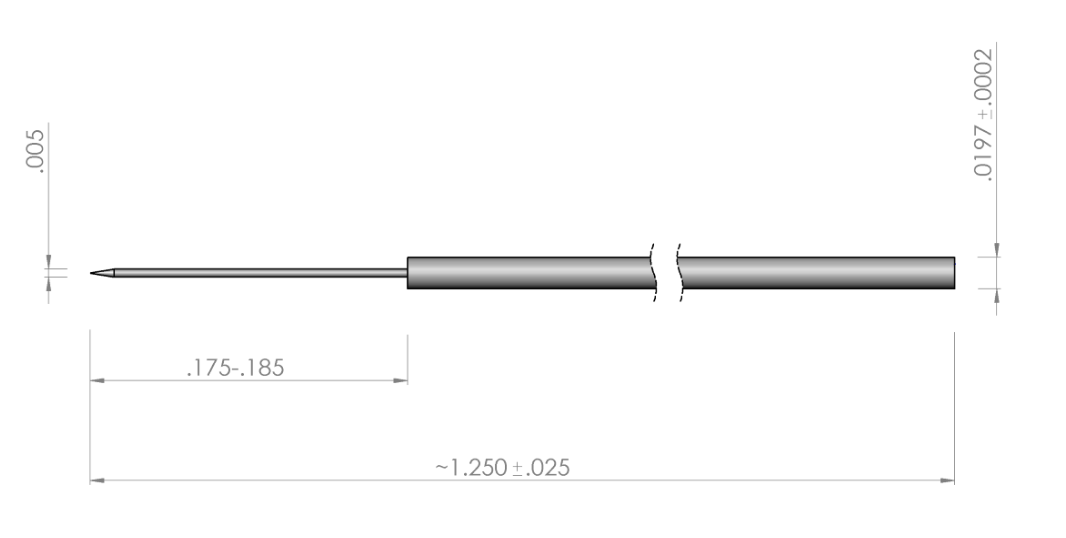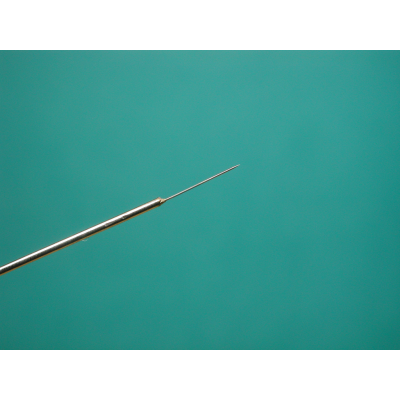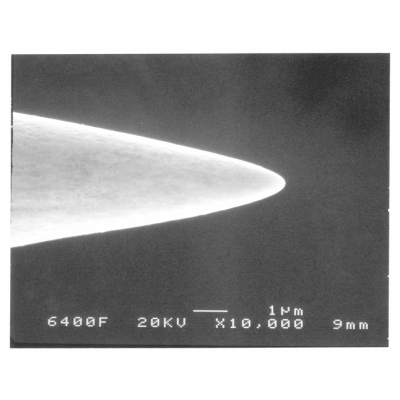-
What size probe should I use?
-
The typical recommendation is to use a probe diameter that is half to two thirds the size of the contact. Remember, APT's probes are sold by the radius, so you must double the number to determine the diameter. It is normally found that a radius larger than 20 microns does not yield lower contact resistance. An example is: The contact pad is 10 microns, using the recommendation, you would then use a probe with a radius of 2.5 - 3.5 microns. (5- 7 micron diameter)
-
Why are some probes etch and others ground?
-
There are two common ways to manufacture the probe's taper and radius: 1.Electrochemically etch 2.Mechanically grind Why is one method chosen over another? 1.The base material is the driving reason: a. Tungsten, Tungsten rhenium are typically electrochemically etched b. Paliney® 7, beryllium copper, tungsten carbide, steel are generally mechanically ground materials This is the short answer, for more details on the subject please refer to the link in the Technical Resources Area under Probe Question's.
Dimensions of the 72S Series 5 mil (0.005") tungsten wire butt welded to a nickel plated copper alloy 20 mil (0.0197") shank.
The tungsten wire "contact probe" is electrochemically etched to form the taper and radius:

Please refer to this section for American Probe & Technologies cross reference to other manufactures model numbers.
Cascade Part Number |
Equivalent APT Model Number |
| 76305 | 72S-D3/025 |
| 40701 | 72S-D3/035 |
| 76306 | 72S-D3/05 |
| 17584 | 72S-D3/10 |
| 75079 | 72S-E3/025 |
| 69693 | 72S-E3/035 |
| 69694 | 72S-E3/05 |
Karl Suss Part Number |
Equivalent APT Model Number |
| K00-17584 | 72S-D3/10 |
| K00-40701 | 72S-D3/035 |
Probing Solutions Part Number |
Equivalent APT Model Number |
| 407A |
72S-D3/035
|



